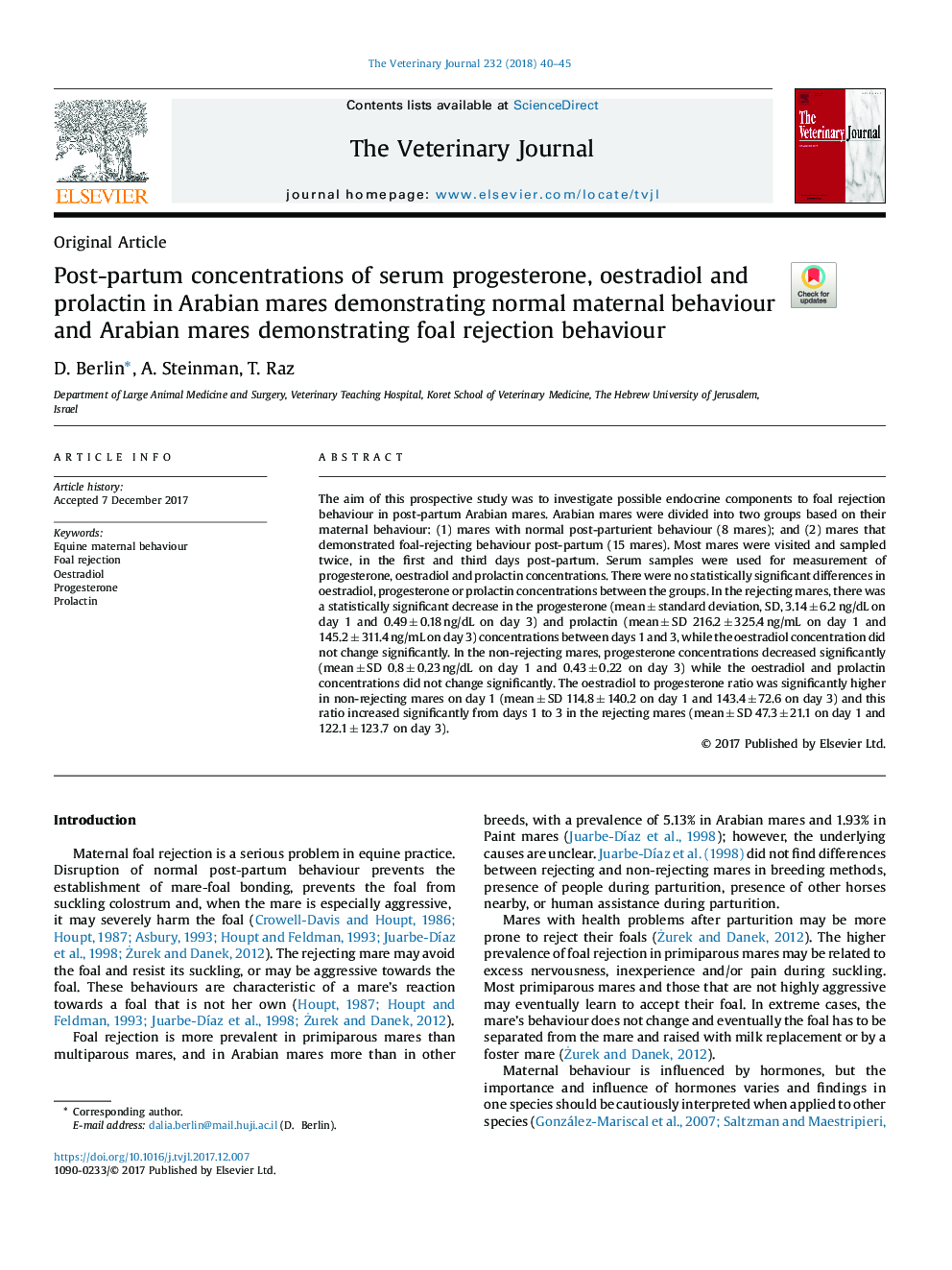| Article ID | Journal | Published Year | Pages | File Type |
|---|---|---|---|---|
| 8504959 | The Veterinary Journal | 2018 | 6 Pages |
Abstract
The aim of this prospective study was to investigate possible endocrine components to foal rejection behaviour in post-partum Arabian mares. Arabian mares were divided into two groups based on their maternal behaviour: (1) mares with normal post-parturient behaviour (8 mares); and (2) mares that demonstrated foal-rejecting behaviour post-partum (15 mares). Most mares were visited and sampled twice, in the first and third days post-partum. Serum samples were used for measurement of progesterone, oestradiol and prolactin concentrations. There were no statistically significant differences in oestradiol, progesterone or prolactin concentrations between the groups. In the rejecting mares, there was a statistically significant decrease in the progesterone (mean ± standard deviation, SD, 3.14 ± 6.2 ng/dL on day 1 and 0.49 ± 0.18 ng/dL on day 3) and prolactin (mean ± SD 216.2 ± 325.4 ng/mL on day 1 and 145.2 ± 311.4 ng/mL on day 3) concentrations between days 1 and 3, while the oestradiol concentration did not change significantly. In the non-rejecting mares, progesterone concentrations decreased significantly (mean ± SD 0.8 ± 0.23 ng/dL on day 1 and 0.43 ± 0.22 on day 3) while the oestradiol and prolactin concentrations did not change significantly. The oestradiol to progesterone ratio was significantly higher in non-rejecting mares on day 1 (mean ± SD 114.8 ± 140.2 on day 1 and 143.4 ± 72.6 on day 3) and this ratio increased significantly from days 1 to 3 in the rejecting mares (mean ± SD 47.3 ± 21.1 on day 1 and 122.1 ± 123.7 on day 3).
Keywords
Related Topics
Life Sciences
Agricultural and Biological Sciences
Animal Science and Zoology
Authors
D. Berlin, A. Steinman, T. Raz,
